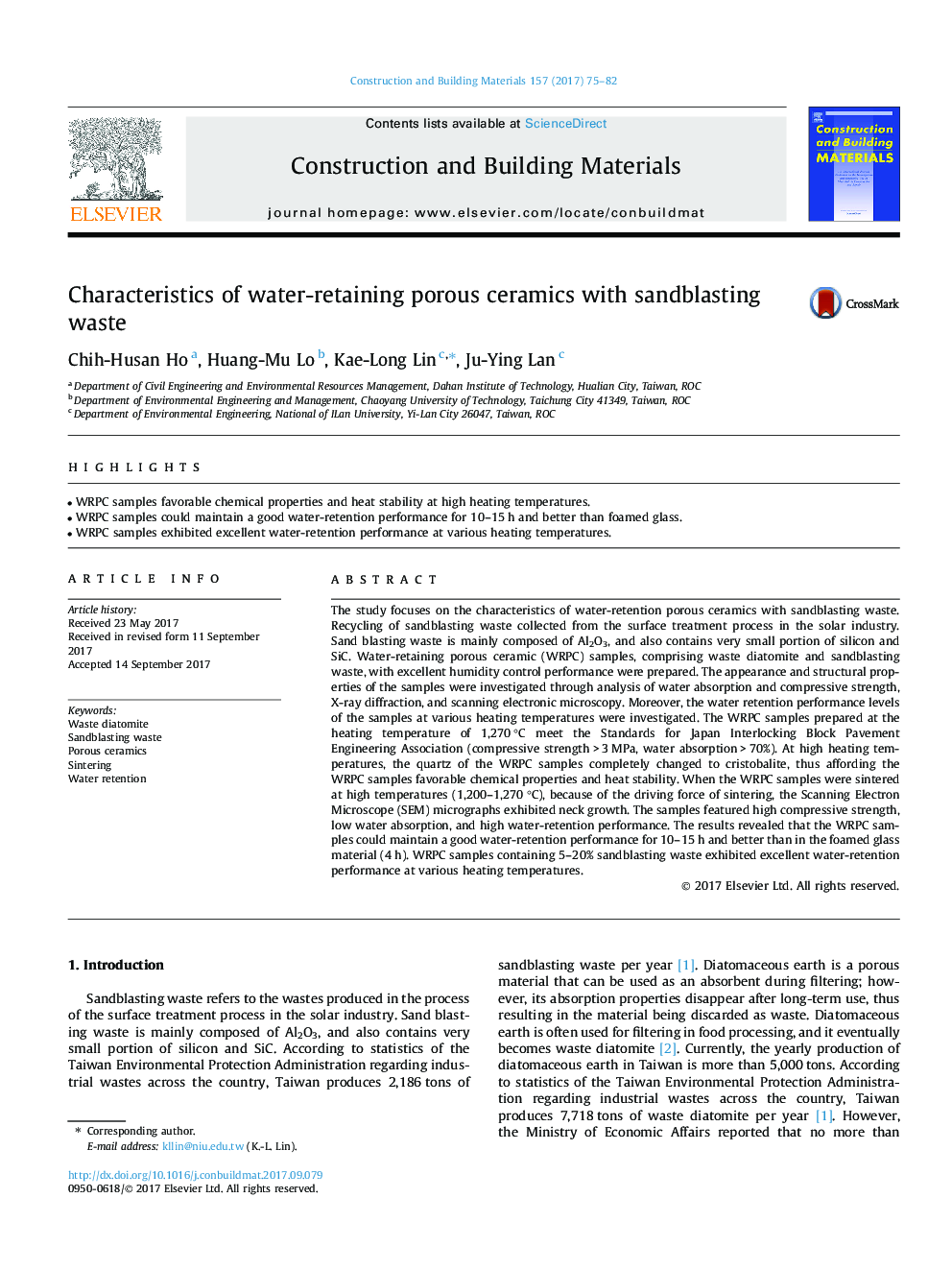| Article ID | Journal | Published Year | Pages | File Type |
|---|---|---|---|---|
| 4912854 | Construction and Building Materials | 2017 | 8 Pages |
Abstract
The study focuses on the characteristics of water-retention porous ceramics with sandblasting waste. Recycling of sandblasting waste collected from the surface treatment process in the solar industry. Sand blasting waste is mainly composed of Al2O3, and also contains very small portion of silicon and SiC. Water-retaining porous ceramic (WRPC) samples, comprising waste diatomite and sandblasting waste, with excellent humidity control performance were prepared. The appearance and structural properties of the samples were investigated through analysis of water absorption and compressive strength, X-ray diffraction, and scanning electronic microscopy. Moreover, the water retention performance levels of the samples at various heating temperatures were investigated. The WRPC samples prepared at the heating temperature of 1,270 °C meet the Standards for Japan Interlocking Block Pavement Engineering Association (compressive strength > 3 MPa, water absorption > 70%). At high heating temperatures, the quartz of the WRPC samples completely changed to cristobalite, thus affording the WRPC samples favorable chemical properties and heat stability. When the WRPC samples were sintered at high temperatures (1,200-1,270 °C), because of the driving force of sintering, the Scanning Electron Microscope (SEM) micrographs exhibited neck growth. The samples featured high compressive strength, low water absorption, and high water-retention performance. The results revealed that the WRPC samples could maintain a good water-retention performance for 10-15 h and better than in the foamed glass material (4 h). WRPC samples containing 5-20% sandblasting waste exhibited excellent water-retention performance at various heating temperatures.
Related Topics
Physical Sciences and Engineering
Engineering
Civil and Structural Engineering
Authors
Chih-Husan Ho, Huang-Mu Lo, Kae-Long Lin, Ju-Ying Lan,
